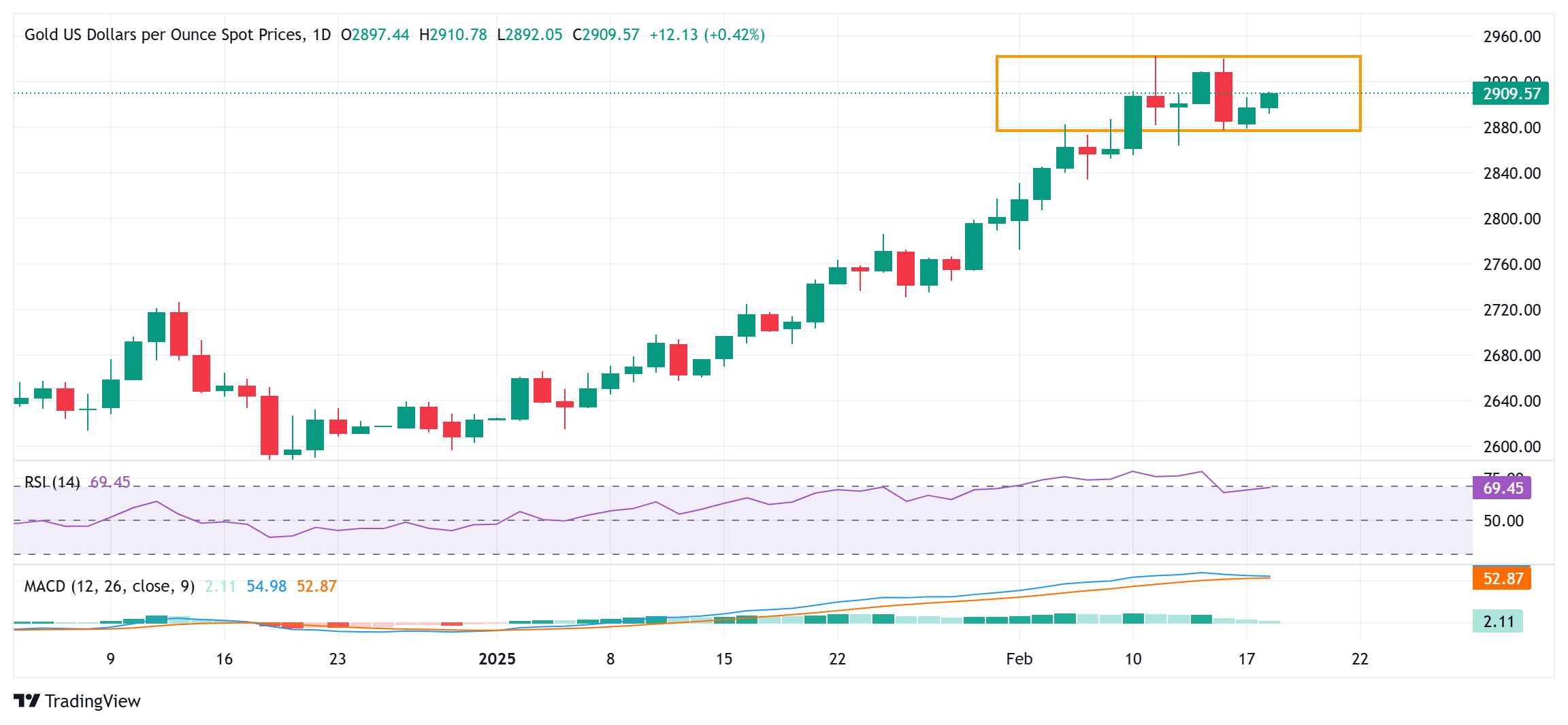Gold prices edged higher on Wednesday, remaining firmly above the $2,900 mark, as investors balanced safe-haven demand against shifting expectations for global interest rates. Despite lingering market volatility, gold continues to trade within a familiar range, lacking a clear catalyst for a decisive breakout.
The precious metal has found support from ongoing economic and geopolitical uncertainties, with investors keeping a close watch on central bank policies and inflation data. While the Federal Reserve has maintained a cautious stance, speculation over potential rate cuts later this year has limited the downside for non-yielding assets like gold.
At the same time, the US dollar and Treasury yields have shown resilience, preventing gold from making a stronger push higher. The dollar’s relative strength, coupled with uncertainty surrounding the timing of Fed rate cuts, has kept gold’s rally in check, with traders hesitant to make aggressive bets in either direction.

Gold US Dollar 1-D Chart as of February 18, 2025 (Source: TradingView)
Broader market sentiment remains mixed, with investors weighing inflation risks, geopolitical tensions, and economic growth prospects. While safe-haven demand has provided a floor for gold prices, a lack of immediate risk-off triggers has kept gold confined to its current range. The upcoming US inflation report and Federal Reserve minutes could serve as key factors influencing the next move.
In the short term, gold traders are likely to focus on macroeconomic cues and market positioning. A stronger-than-expected US economic report could push Treasury yields higher, pressuring gold, while any signs of economic softening may reinforce expectations for Fed easing, supporting the metal’s appeal.
For now, gold remains well-supported above $2,900, but a breakout will depend on clearer signals from the Fed and broader shifts in risk sentiment. Until then, range-bound trading is likely to persist, with investors looking for the next major driver to determine the metal’s direction.













